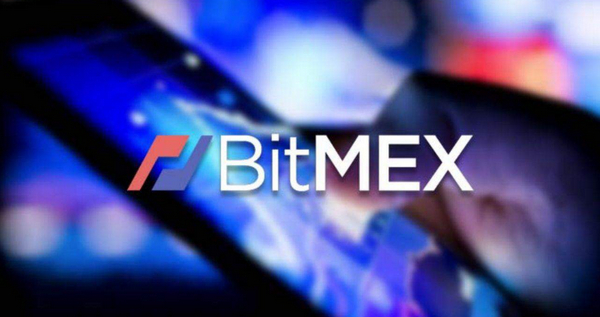-
 Bitcoin
Bitcoin $91,326.2112
4.73% -
 Ethereum
Ethereum $1,695.3184
7.62% -
 Tether USDt
Tether USDt $1.0005
0.05% -
 XRP
XRP $2.1510
3.43% -
 BNB
BNB $608.0825
2.14% -
 Solana
Solana $143.8333
5.33% -
 USDC
USDC $0.9999
0.00% -
 Dogecoin
Dogecoin $0.1719
8.85% -
 TRON
TRON $0.2453
-0.08% -
 Cardano
Cardano $0.6550
5.53% -
 Chainlink
Chainlink $13.8161
5.27% -
 Avalanche
Avalanche $21.6006
7.78% -
 UNUS SED LEO
UNUS SED LEO $9.0313
-1.17% -
 Stellar
Stellar $0.2608
2.91% -
 Sui
Sui $2.4556
11.84% -
 Shiba Inu
Shiba Inu $0.0...01320
6.30% -
 Toncoin
Toncoin $3.0062
3.66% -
 Hedera
Hedera $0.1770
3.91% -
 Bitcoin Cash
Bitcoin Cash $356.7500
3.40% -
 Hyperliquid
Hyperliquid $18.8079
5.10% -
 Litecoin
Litecoin $82.8692
6.10% -
 Polkadot
Polkadot $3.9082
1.95% -
 Dai
Dai $1.0000
0.00% -
 Bitget Token
Bitget Token $4.5162
1.92% -
 Ethena USDe
Ethena USDe $0.9997
0.04% -
 Pi
Pi $0.6391
0.53% -
 Monero
Monero $222.2978
3.60% -
 Pepe
Pepe $0.0...08402
7.94% -
 Uniswap
Uniswap $5.6203
6.54% -
 Aptos
Aptos $5.1283
2.40%
BitMEX perpetual contract tutorial example
In a BitMEX perpetual contract trade, a trader leverages 10x on the BTC/USD contract, buying 1 BTC equivalent with a margin requirement of 1 BTC, to capitalize on a bullish sentiment in Bitcoin's price.
Nov 09, 2024 at 12:46 am

BitMEX Perpetual Contract Tutorial Example
Understanding Perpetual Contracts
Conceptual Overview
Perpetual contracts are financial instruments that track the price of an underlying asset, akin to traditional futures contracts. However, unlike regular futures, perpetual contracts do not have a fixed expiration date and can be held indefinitely, providing traders with continuous exposure to market fluctuations. This design feature eliminates the need for rolling over contracts, which can be costly and complex in traditional futures trading.
Key Features
- No Expiry Dates: Perpetual contracts dissolve the constraint of predefined expiry dates, offering perpetual exposure to market movements and eliminating the hassle of contract rollovers.
- Continuous Trading: The ability to trade perpetually extends the trading window beyond business hours, allowing traders to capitalize on price swings around the clock.
- Leverage and Margin: Like futures contracts, perpetual contracts enable traders to use leverage to magnify their profit potential while also limiting their losses to the margin posted.
Getting Started with BitMEX Perpetual Contracts
Creating an Account
To initiate trading on BitMEX, you must first create an account by providing personal information, verifying your email address, and setting up two-factor authentication (2FA) for enhanced security.
Funding Your Account
Once your account is established, you need to transfer funds to enable trading. BitMEX supports various cryptocurrencies as deposit methods, including Bitcoin (BTC), Ethereum (ETH), Tether (USDT), and others.
Selecting a Contract
BitMEX offers a diverse range of perpetual contracts tied to various cryptocurrencies, such as BTC/USD, ETH/USD, and XRP/USD. Select a contract based on your market view and risk tolerance.
Trading Perpetual Contracts
Placing an Order
BitMEX provides a user-friendly trading interface that allows traders to place orders effortlessly. You can choose between market orders (executed immediately at the current market price) or limit orders (executed at a specified price).
Monitoring Positions
After placing an order, you can monitor your open positions, view their profit/loss (PnL), and manage your risk. BitMEX's intuitive dashboard provides comprehensive information regarding your active trades.
Closing a Position
To realize your PnL and exit a position, you must close it by placing an opposing order. For instance, if you had entered a long position (buying), you would need to close it with a short position (selling).
Advanced Trading Techniques
Leverage Management
Leverage is a double-edged sword, amplifying both profits and losses. Use leverage judiciously, as excessive leverage can lead to significant losses. BitMEX provides tiered leverage options, allowing traders to tailor leverage to their risk appetite.
Stop-Loss Orders
Stop-loss orders are crucial risk management tools that help limit potential losses. By setting a stop-loss order, you can automate the selling of your position if the market price reaches a predefined threshold, protecting your capital from adverse price movements.
Trailing Stop-Loss Orders
Trailing stop-loss orders are dynamic stop-loss orders that move in tandem with the market price and maintain a specified distance from the prevailing price. This technique is advantageous in capturing potential gains while mitigating downside risk.
Example Trade
Scenario
Suppose you believe the price of Bitcoin will rise. You decide to open a long position on the BTC/USD perpetual contract with 10x leverage.
Execution
Place a market order to buy 1 BTC/USD contract with 10x leverage. Your position size will be 10 BTC, and your margin requirement will be 1 BTC (1/10th of the position size).
Monitoring
Monitor your position's PnL in real-time. If the price of Bitcoin moves in your favor, your PnL will increase. If the price moves against you, your PnL will decrease.
Closing
When you are satisfied with your PnL or if the market conditions change, close your position by placing a market order to sell 1 BTC/USD contract with 10x leverage. Your PnL will be realized at this point.
Disclaimer:info@kdj.com
The information provided is not trading advice. kdj.com does not assume any responsibility for any investments made based on the information provided in this article. Cryptocurrencies are highly volatile and it is highly recommended that you invest with caution after thorough research!
If you believe that the content used on this website infringes your copyright, please contact us immediately (info@kdj.com) and we will delete it promptly.
- This low-cost token is capturing investor interest with its potential to outshine major cryptocurrencies.
- 2025-04-23 04:00:25
- Bitcoin (BTC) Price Has Soared Past the $90,000 Mark Today
- 2025-04-23 04:00:25
- Hedera (HBAR) is steadily climbing, currently trading at $0.1749, reflecting a 1.74% increase
- 2025-04-23 03:55:12
- Paydify Launches to Enable Businesses Worldwide to Accept Crypto Payments
- 2025-04-23 03:55:12
- The Ultimate Guide to Crypto Pre-sales: How to Spot the Next 100x Gem
- 2025-04-23 03:50:13
- Paydify Launches Universal Gateway to Enable Businesses to Accept Crypto Payments from Any Wallet or Blockchain Network
- 2025-04-23 03:50:13
Related knowledge

How does Tail Protection reduce the loss of liquidation?
Apr 11,2025 at 01:50am
Introduction to Tail Protection in CryptocurrencyTail Protection is a mechanism designed to mitigate the risks associated with liquidation in cryptocurrency trading. Liquidation occurs when a trader's position is forcibly closed by the exchange due to insufficient margin to cover potential losses. This often happens in leveraged trading, where traders b...

What are the consequences of an imbalance in the long-short ratio?
Apr 13,2025 at 02:50pm
The long-short ratio is a critical metric in the cryptocurrency trading world, reflecting the balance between bullish and bearish sentiments among traders. An imbalance in this ratio can have significant consequences on the market dynamics, affecting everything from price volatility to trading strategies. Understanding these consequences is essential fo...

How to judge the market trend by the position volume?
Apr 11,2025 at 02:29pm
Understanding how to judge the market trend by position volume is crucial for any cryptocurrency trader. Position volume, which refers to the total number of open positions in a particular cryptocurrency, can provide valuable insights into market sentiment and potential price movements. By analyzing this data, traders can make more informed decisions ab...

Why does a perpetual contract have no expiration date?
Apr 09,2025 at 08:43pm
Perpetual contracts, also known as perpetual futures or perpetual swaps, are a type of derivative product that has gained significant popularity in the cryptocurrency market. Unlike traditional futures contracts, which have a fixed expiration date, perpetual contracts do not expire. This unique feature raises the question: why does a perpetual contract ...

Why is the full-position mode riskier than the position-by-position mode?
Apr 13,2025 at 03:42pm
Why is the Full-Position Mode Riskier Than the Position-by-Position Mode? In the world of cryptocurrency trading, the choice between full-position mode and position-by-position mode can significantly impact the risk profile of a trader's portfolio. Understanding the differences between these two modes is crucial for making informed trading decisions. Th...

How is the liquidation price calculated?
Apr 12,2025 at 01:35am
Introduction to Liquidation PriceLiquidation price is a critical concept in the world of cryptocurrency trading, particularly when dealing with leveraged positions. Understanding how this price is calculated is essential for traders to manage their risk effectively. The liquidation price is the point at which a trader's position is forcibly closed by th...

How does Tail Protection reduce the loss of liquidation?
Apr 11,2025 at 01:50am
Introduction to Tail Protection in CryptocurrencyTail Protection is a mechanism designed to mitigate the risks associated with liquidation in cryptocurrency trading. Liquidation occurs when a trader's position is forcibly closed by the exchange due to insufficient margin to cover potential losses. This often happens in leveraged trading, where traders b...

What are the consequences of an imbalance in the long-short ratio?
Apr 13,2025 at 02:50pm
The long-short ratio is a critical metric in the cryptocurrency trading world, reflecting the balance between bullish and bearish sentiments among traders. An imbalance in this ratio can have significant consequences on the market dynamics, affecting everything from price volatility to trading strategies. Understanding these consequences is essential fo...

How to judge the market trend by the position volume?
Apr 11,2025 at 02:29pm
Understanding how to judge the market trend by position volume is crucial for any cryptocurrency trader. Position volume, which refers to the total number of open positions in a particular cryptocurrency, can provide valuable insights into market sentiment and potential price movements. By analyzing this data, traders can make more informed decisions ab...

Why does a perpetual contract have no expiration date?
Apr 09,2025 at 08:43pm
Perpetual contracts, also known as perpetual futures or perpetual swaps, are a type of derivative product that has gained significant popularity in the cryptocurrency market. Unlike traditional futures contracts, which have a fixed expiration date, perpetual contracts do not expire. This unique feature raises the question: why does a perpetual contract ...

Why is the full-position mode riskier than the position-by-position mode?
Apr 13,2025 at 03:42pm
Why is the Full-Position Mode Riskier Than the Position-by-Position Mode? In the world of cryptocurrency trading, the choice between full-position mode and position-by-position mode can significantly impact the risk profile of a trader's portfolio. Understanding the differences between these two modes is crucial for making informed trading decisions. Th...

How is the liquidation price calculated?
Apr 12,2025 at 01:35am
Introduction to Liquidation PriceLiquidation price is a critical concept in the world of cryptocurrency trading, particularly when dealing with leveraged positions. Understanding how this price is calculated is essential for traders to manage their risk effectively. The liquidation price is the point at which a trader's position is forcibly closed by th...
See all articles























































































